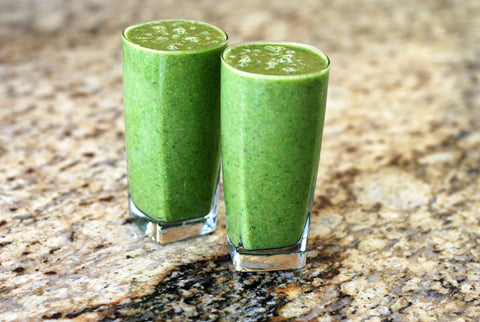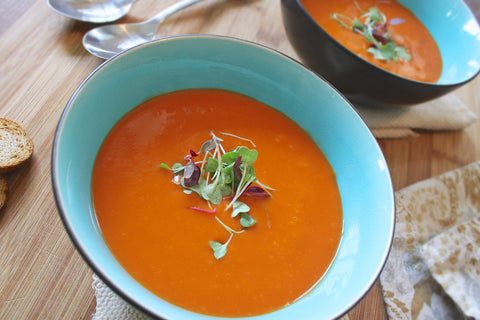
Pine Pollen: Don’t Diminish the Small Yellow Flowers
Share
Most of us maybe familiar with the plant-pine, but seldom know its flower can be useful to us, not just for appreciating its beauty. During January and March, when flowers are matured, people will wild-harvested them, then dry a few days and rub them into the light yellow powder to filter the substance. That’s how we get the pine pollen. While, don’t diminish the pine pollen, studies have shown that it is of great benefits to human health. Toady, I will introduce it to you, feel relax for reading this small article.
Historical Origin
As a kind of Chinese traditional medicine, pine pollen, which is the male spore of pine tree, has been used as a drug and food for thousands of years. It was first recorded in Shennong’s Root and Herbal Classic in the Han Dynasty over 2,000 years ago, it is bright yellow or light yellow fine pollen. It tastes sweet, flat and non-toxic, that’s why people use it as a traditional Chinese food. Some traditional Chinese food such as Songhua(pine) cake, Songhua Tuanzi(Monchi) and Songhua wine still contain pine pollen. Pine pollen, called “natural micronutrient bank,” is rich in many kinds of body-demanding amino acid, minerals, vitamin, enzyme, and flavonoids. It has great medicinal value, and has significant effect on skin related diseases which is applied widely by people as food. Besides that, studies has shown that pine pollen as an attractive agent with potential to retard aging and attenuate age-related diseases in humans.[1]

Key Features:
- 100% Natural: It is deep in the mountain and wild-harvested artificially to ensure the pure quality, stable ingredient. No added pesticides and fillers.
- Nutritious Food: Pine pollen is the male spore of pine tree, which is responsible for the reproduction of pine tree. It contains more than 200 kinds of nutrients with reasonable collocation, so it can comprehensively supplement and balance the nutrition needed by human body.

For Health Benefits:
As an efficient functional health food, pine pollen can regulate all systems of human body and is very beneficial to human health.
- Anti-fatigue: Fatigue is a biological phenomenon, it involves an extreme physical or mental fatigueand may lead to some serious chronic diseases.Pine pollen contains comprehensive and balanced nutrition, can enhance physical strength, energy and help people relieve the fatigue comprehensively.
- Anti-aging: Pine pollen contains a large number of antioxidant components, such as vitamin E, carotene and trace element selenium, which can inhibit the speed of lipid and protein peroxidation in the body, so as to delay aging. The antiaging effect of pine pollen in vitro was firstly investigated by using the human diploid fibroblasts (2BS) cell line, which has been well characterized and widely used as a cellular senescence model.[2]

- Skincare: Pine pollen not only has a unique physiological function, but also promotes the metabolism of skin cells, delays the aging of skin cells, increases the elasticity of skin, and makes skin white, ruddy and healthy. It is known as the “cosmetics for eating”.
- Gut Health: Pine pollen contains nearly 100 kinds of enzymes, which can promote gastrointestinal peristalsis, improveappetiteand help digestion. It also has obvious regulatory effect on gastrointestinal dysfunction.
- Liver Health: The liver is one of the most important organs that regulate metabolic functions, hormones, and defense mechanisms in the body. Several studies have been performed to determine the hepatoprotective or lipid-lowering effects of the various aforementioned pollen extracts as the liver is known to play the foremost role in lipid transformations.[3]

- Anti-inflammatory& Antioxidant: According to the study that pine pollen displayed a strong free radical scavenger activity on 1,1-diphenyl-2-picrylhydrazyl radical and hydrogen peroxide, so it can be concluded that pine pollen shows strong antioxidant and anti-inflammatoryactivity. The pine pollen extract, therefore, may be useful in developing new herbal medicine against oxidative stress diseases and might be relevant for clinical use for inflammatory diseases.[4]
Recommendation

Pine Pollen is considered an adaptogenic herb, meaning that it is one that restores balance to the body by adapting its effects to whatever conditions are present. For this reason, it’s safe for both men and women to take. We both have pine pollen powder and pine pollen capsules as you like, feel free to choose. Our capsules are vegan and easy to swallow, while our powder can be added to any beverages you like, both of them have been tested by 3rd parties to ensure the pure and safety quality. We insist live alongside nature and not exploit it and believe food offered for consumption should be untouched, pure, nutrient-rich and toxin-free. Our company crafted an array of products through traditional practices. These practices and products ensure there is zero pollution, reducing the wastage to almost nil.
How to Use
The powder has a mild “piney” flavor and can be consumed with other foods, blended into drinks or mixed in water. In can also be added to various desserts like a flour ingredient, which is often the way it is consumed in parts of Asia.


*These statements have not been evaluated by the FDA. This product is not intended to diagnose, treat, cure or prevent any disease.
** Not recommended for children.
References
1. Mao GX, Zheng LD, Cao YB, et al. Antiaging effect of pine pollen in human diploid fibroblasts and in a mouse model induced by D-galactose. Oxid Med Cell Longev. 2012;2012:750963. doi:10.1155/2012/750963.
2. Li J, Zhang Z, Tong T. The proliferative response and anti-oncogene expression in old 2BS cells after growth factor stimulation. Mechanisms of Ageing and Development. 1995;80(1):25–34.
3. Gök HN, Gül H, Gülfraz M, et al. Preclinical Study on the Hepatoprotective Effect of Pollen Extract of Pinus brutia Ten. (Red Pine) in Mice and Phenolic Acid Analysis.Turk J Pharm Sci. 2021;18(3):319-325. doi:10.4274/tjps.galenos.2020.47154
4. Lee KH, Kim AJ, Choi EM. Antioxidant and antiinflammatory activity of pine pollen extract in vitro. Phytother Res. 2009 Jan;23(1):41-8. doi: 10.1002/ptr.2525. PMID: 19107823.
